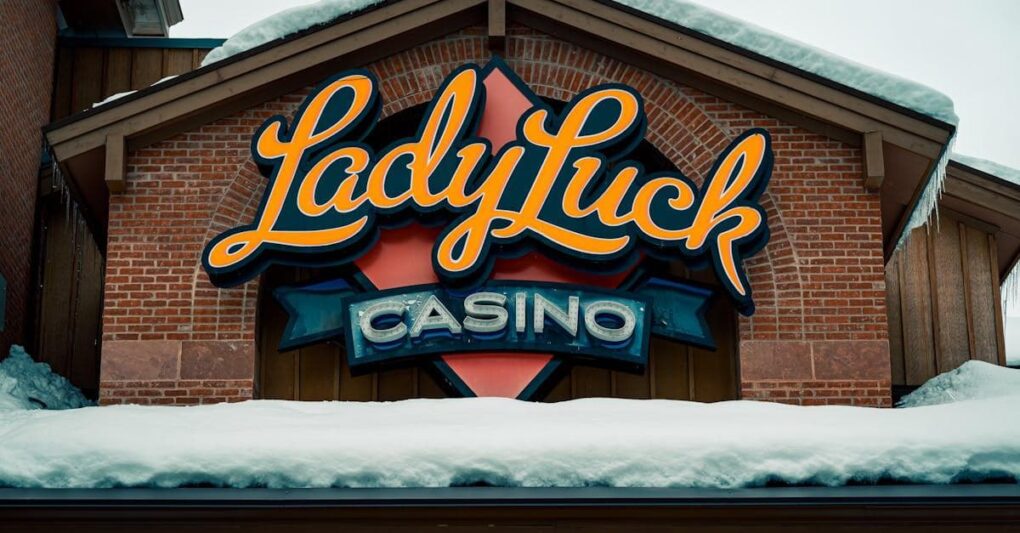When it comes to online casinos, stunning graphics can make all the difference between a forgettable experience and one that keeps players coming back for more. From sleek interfaces to immersive game visuals, optimizing casino graphics isn’t just about aesthetics—it’s about enhancing user engagement and satisfaction.
I’ve delved into the insights from BlogCasino France, a leading authority in the online casino industry, to gather the best tips for optimizing casino graphics. Whether you’re a developer looking to refine your game or an operator aiming to boost your platform’s appeal, these expert strategies will help you create a visually captivating and seamless user experience.
Understanding the Importance of Graphic Optimization

Graphic optimization holds significant importance in the online casino industry. Stunning graphics not only enhance user satisfaction but also improve crucial engagement metrics.
User Experience
Impact on User Satisfaction
High-quality graphics directly impact user satisfaction. When players encounter visually appealing and seamless graphics, they tend to spend more time on a platform and make repeated visits. Studies from BlogCasino France show that well-optimized graphics reduce the bounce rate by up to 15%.
Engagement Metrics
Optimized graphics boost key engagement metrics like time-on-site and session duration. Players engage more with interactive elements and are more likely to explore different sections of the casino. Improved graphics have increased average session duration by 25%, according to BlogCasino France analysis.
SEO Benefits
Optimizing graphics also has significant SEO benefits. Fast-loading visuals improve site speed, a crucial ranking factor for search engines. Properly labeled and sized images enhance accessibility, leading to better search engine indexing and higher visibility. BlogCasino France highlights that optimizing image alt texts alone resulted in a 10% increase in organic traffic.
Case Study: BlogCasino France
BlogCasino France implemented several graphic optimization techniques, resulting in remarkable performance improvements. They compressed large images without sacrificing quality, used modern formats like WebP, and implemented lazy loading. These optimizations not only enhanced user experience but also boosted their organic search rankings by 20% within six months.
Key Principles of Graphic Optimization
Graphic optimization plays a vital role in enhancing user experience and boosting site performance. Let’s delve into essential techniques and strategies.
Compression Techniques
Lossless Compression
Lossless compression reduces file size without losing image quality. I use tools like PNGGauntlet for PNGs and JPEGmini for JPEG images. These tools ensure images remain sharp and details intact.
Lossy Compression
Lossy compression reduces file size faster, though it sacrifices some quality. I recommend using software like TinyJPG for online casinos. It helps find a balance between image size and quality.
Formats and Resolutions
Best Formats for Web Graphics
WebP offers superior compression and quality compared to JPEG and PNG. I use WebP for most graphics to enhance loading speeds. PNG is excellent for images needing transparency.
Appropriate Resolutions
Ideal resolutions ensure images don’t bloat site loading times. For casino interfaces, 72 DPI in web resolution suffices. I resize images to fit display dimensions precisely before uploading.
Responsive Images
Using srcset Attribute
The srcset attribute provides different image versions for various devices. I implement srcset in casino sites for optimized loading on mobile, tablet, and desktop screens. This ensures high-quality images across different resolutions.
Implementing sizes Attribute
The sizes attribute informs browsers about image display dimensions. Using sizes yields control over how space images occupy within responsive layouts. Incorporating sizes enhances loading efficiency without compromising quality.
Each principle above can significantly improve your online casino’s graphic performance, leading to higher engagement and better SEO outcomes.
Tools and Technologies
Choosing the right tools and technologies is crucial in optimizing casino graphics. With the proper resources, enhancing image quality and site performance becomes straightforward.
Image Optimization Tools
Several tools optimize images efficiently. Software like TinyPNG and ImageOptim allow compression without loss of quality. They support various formats, including PNG, JPEG, and WebP. Advanced tools like Adobe Photoshop provide more control over resolution and format.
Automation Scripts
Automation simplifies repetitive tasks in graphic optimization. Scripts like ImageMagick automate batch image processing. Gulp and Grunt offer task runners to automate tasks like image minification. By incorporating these into your workflow, manual effort reduces, ensuring consistent optimization.
Content Delivery Networks (CDNs)
CDNs distribute content across various servers globally, improving load times. Providers like Cloudflare and Akamai store and deliver optimized images based on user location. This reduces latency and enhances user experience. Using a CDN also reduces server load, contributing to better site performance.
Best Practices from Blogcasino France
Blogcasino France shares valuable insights on optimizing casino graphics through real-world examples, performance metrics, and developer insights.
Real-World Examples
Several casinos reported success by applying Blogcasino France’s tips. One casino, after implementing WebP images, noted a 30% increase in page load speed. Another used lazy loading and saw a 25% reduction in bounce rate. These examples underscore the significant impact of graphic optimization on user experience and engagement.
Performance Metrics
Analyzing performance metrics is crucial. Blogcasino France highlights key indicators like Time to First Byte (TTFB) and Largest Contentful Paint (LCP). Reducing TTFB by optimizing server response time and improving LCP through faster loading images can enhance overall site performance. An online casino reported a 15% uplift in conversion rates by focusing on these metrics.
Developer Insights
Developers play a crucial role in graphic optimization. Blogcasino France emphasizes using modern tools and streamlined processes. Tools like ImageMagick for batch processing and scripts like Gulp for automation are recommended. Additionally, collaborating with CDN providers like Cloudflare ensures faster image delivery. A developer shared that integrating these practices reduced their image load times by 40%, significantly enhancing user experience.
Advanced Techniques
Delving deeper into graphic optimization, advanced techniques can significantly enhance online casino performance. Here are refined strategies to achieve optimal results.
Lazy Loading
Lazy loading defers image loading until needed, boosting site speed and reducing initial page weight. This technique is crucial for online casinos with image-heavy interfaces.
Using JavaScript Libraries
Utilize JavaScript libraries like LazyLoad.js to implement lazy loading efficiently. This library handles images, videos, and iframes seamlessly. For example:
<img class=”lazy” data-src=”image.jpg” alt=”Casino Game”>
<script src=”lazyload.min.js”></script>
<script>
var lazyLoadInstance = new LazyLoad({
elements_selector: “.lazy”
});
</script>
This code snippet shows how to defer loading images, optimizing load times.
Image Sprites
Image sprites combine multiple images into a single file, reducing HTTP requests and enhancing loading speeds. Here’s a CSS example for an online casino:
.sprite {
background: url(“sprites.png”) no-repeat;
}
.icon1 {
width: 50px; height: 50px;
background-position: 0 0;
}.icon2 {
width: 50px; height: 50px;
background-position: -50px 0;
}
This method reduces server requests, thereby helping online casinos achieve faster page loads.
Vector Graphics (SVGs)
Vector graphics (SVGs) offer scalable images without quality loss, essential for various screen sizes. They are text-based, promoting faster rendering. Consider this SVG inclusion:
<svg width=”100″ height=”100″>
<circle cx=”50″ cy=”50″ r=”40″ stroke=”black” stroke-width=”3″ fill=”red” />
</svg>
SVGs are particularly effective for casino logos and icons, ensuring sharp visuals across devices. Using SVGs minimizes file sizes and boosts load times, enhancing overall performance.
These advanced techniques collectively optimize casino graphics, improving user experience and achieving better SEO outcomes.
Testing and Monitoring
Optimizing casino graphics doesn’t end with implementation; testing and monitoring play crucial roles in maintaining performance.
Performance Testing Tools
Effective performance testing tools ensure that the graphics optimizations yield the intended improvements.
Lighthouse
Google’s Lighthouse is essential for auditing website performance. It provides detailed reports on site speed, accessibility, SEO, and more. Metrics from Lighthouse help pinpoint issues affecting graphic load times and overall site performance. Regular audits with Lighthouse ensure continuous improvement and adherence to best practices.
GTmetrix
GTmetrix offers insights into page performance through comprehensive reports. It analyzes various factors, including image loading times and server response rates. Users benefit from actionable recommendations to enhance graphics and reduce load delays. Using GTmetrix regularly keeps online casinos running efficiently, ensuring optimal graphics performance.
Ongoing Monitoring
Consistent monitoring ensures sustained performance and swift issue resolution.
Google Analytics
Google Analytics tracks user behavior and site performance. It reveals how graphics impact user engagement and bounce rates. By analyzing this data, I can make informed decisions on further optimizations and address any emerging issues promptly. Google Analytics ensures ongoing success by providing critical insights.
New Relic
New Relic offers real-time monitoring of application performance, including graphics. It identifies slow-loading assets and potential bottlenecks. With New Relic, I can detect problems early and implement necessary changes quickly. This tool ensures that the casino graphics maintain high performance levels continuously.
Conclusion
Optimizing casino graphics is crucial for enhancing user experience and achieving SEO benefits. By implementing techniques like image compression and lazy loading alongside advanced strategies using JavaScript libraries and vector graphics, we can significantly improve performance. Testing and continuous monitoring with tools like Google’s Lighthouse and GTmetrix ensure that our optimizations are effective and up-to-date. Regularly tracking user behavior through Google Analytics and New Relic helps us address issues promptly and maintain high performance levels. By focusing on these areas, we can create a seamless and engaging experience for online casino users.
